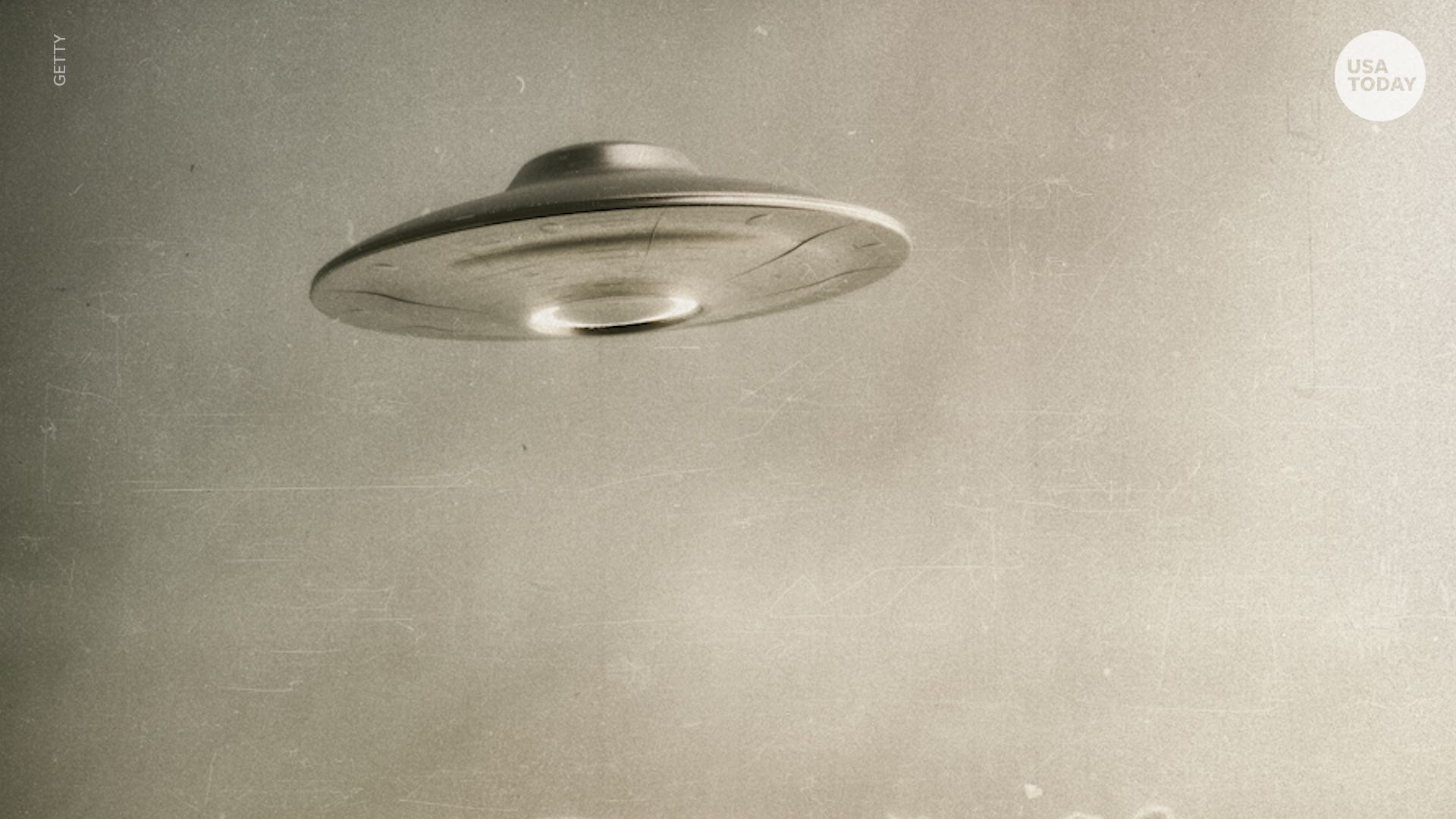| Arizona Republic

UFOs: The top 5 states you’ll find unexplained sightings
If you want a chance at seeing extraterrestrials, your best bet is to head to these states.
PHOENIX — It’s a bird, it’s a plane, no, it’s a satellite. Or maybe a weather balloon.
Navajo Nation officials say it fell from the sky Wednesday and landed in remote Dennehotso, a community on reservation areas of Arizona.
Tully Begay, vice president of the tribe’s Dennehotso Chapter, told The Arizona Republic, part of the USA TODAY Network, the object landed about 1,200 feet from his home while he was away in Tuba City.
He said he began to get calls from relatives at about 1 p.m. on Nov. 18 saying they witnessed the crash and captured it on photo and video.
One of the photos was later shared on Facebook by Navajo Nation Council Delegate Nate Brown. The gray object in the photo appeared to have four large solar panels and rested upon dirt in a remote area. An orange object nearby appears to be a parachute.
The Navajo Police Department confirmed officers responded to the area after receiving reports about an object that fell from the sky, said department spokesperson Christina Tsosie.
Tsosie described the object as a satellite, which crash-landed. There were no reports of injuries or property damage, she said.
The cause of the crash was unknown and the “satellite material” was released to employees from a company called Polar Field Services, she said.
Company officials did not respond to requests for comment Thursday. According to the company website, the Colorado-based firm specializes in providing logistics and support for expeditions to locations in extreme climates.
While tribal officials said the object appeared to be a satellite, it seems similar to an object that crashed in Michigan last year.
That object turned out to be a high-altitude weather balloon. Polar Field uses similar balloons in its operations.
The balloon that crashed in Michigan had been launched by Samsung as part of a “SpaceSelfie” ad campaign and crashed because of unexpected weather conditions, according to news reports at the time.
If this week’s object was from space, it wouldn’t be the first time a piece of extra-terrestrial junk hit the Earth.
According to the National Environmental Satellite, Data and Information Service, more than 170 million pieces of space debris are currently orbiting the earth, old satellites and fragments from disintegration, erosion and collisions.
More: Mystery jet pack flyer spotted near Los Angeles – and it’s not the first time
Opinion: In 2020, anything’s possible. New government intelligence might prove alien life is, too.
On average, between 200 and 400 of those objects enter Earth’s atmosphere each year, or about one object a day.
People were rarely affected by the falling objects because more than 70% of the surface of the Earth was ocean.
The debris poses a greater risk to other unmanned or manned spacecraft in its path because it orbits at high velocity and can cause damage to whatever it collides with.
In a 2011 interview with Space.com, Ray Williamson, then the executive director of the Secure World Foundation, said the issue of space junk is appearing on more peoples’ radar.
“It’s a serious issue,” said Williamson, who years earlier directed the first space debris study for Congress.
“At that point, hardly anybody knew about space debris, and I thought it was very frustrating because I could see the way things were going. It turns out a decade or two later, the issue has become so concerning to people that they have begun to pay real attention to it.”
‘Unidentified aerial phenomena’: Pentagon declassifies 3 leaked US Navy UFO videos
More: Take a road trip and go UFO hunting at these 10 site
In 1997, a woman in Oklahoma was hit with a lightweight piece of woven material that fell from the sky. She was not hurt. According to Space.com, the charred fragment turned out to from a Delta 2 rocket booster that had mostly burned up while reentering the Earth’s atmosphere.
Perhaps the best known piece of space junk was the U.S. space station known as Skylab, which plummeted to Earth on July 11, 1979. As the 77-ton behemoth fell through the atmosphere, it rained debris over Western Australia and the Indian Ocean. No one was injured.
Follow Chelsea Curtis on Twitter @curtis_chels.
